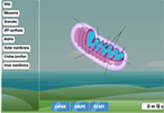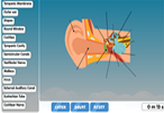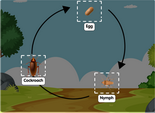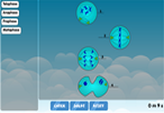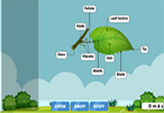Eukaryotic cell diagram labelling game
What do microscopic amoebae, pine trees, Portobello mushrooms, and giant whales have in common in terms of their cellular structure?
Enter the Microscopic World with Interactive Cell Diagram Labelling
Every living organism is made up of cells, and understanding these tiny building blocks can offer a deeper insight into the complex world of biology. Eukaryotic cells, in particular, form the foundation for many organisms, including humans, plants, and animals. So, what better way to comprehend the intricate details of a eukaryotic cell than by indulging in interactive labelling? With a cell diagram to label, children can discover the fascinating components of a cell in a fun, engaging manner.
The Magic of the Eukaryotic Cell
Eukaryotic cells are unique and distinct from their prokaryotic counterparts. What sets them apart is the presence of membrane-bound organelles, such as the nucleus, mitochondria, and endoplasmic reticulum. When children see a diagram of a eukaryotic cell, they embark on an exploratory journey to understand how these tiny organelles function cohesively to support life.
Why Interactive Labelling Works
Traditional teaching methods often rely on static images or textual descriptions, which may not cater to the learning preferences of all students. However, when students engage with a cell diagram with labels, they can actively participate in the learning process. This hands-on approach, such as the one provided by ESL Games Plus's labelling game, ensures not only better retention but also a deeper understanding of the topic.
Features of the Interactive Cell Diagram Labelling Tool
Imagine being presented with a clear, high-resolution diagram of eukaryotic cell with draggable labels. As students navigate this platform, they receive hints and brief descriptions of each organelle, guiding them to place the label correctly. This trial-and-error method reinforces learning, as children can rectify their mistakes immediately.
Upon completing the task to label a cell diagram, students receive instant feedback. They can assess their understanding, see which parts they labeled correctly, and learn more about the areas they missed.
Beyond the Cell: A World of Science Awaits
After immersing oneself in the world of eukaryotic cells, students have the opportunity to explore other captivating topics. ESL Games Plus Science Games offers a plethora of interactive games and quizzes, ranging from human anatomy to fundamental principles of physics. With such resources at their fingertips, children can nurture their scientific curiosity in the most interactive ways.
In Conclusion
Understanding the microscopic wonders of life can be made exciting and engaging with interactive tools. By encouraging children to label cell diagram and explore the nuances of a labeled cell diagram, we pave the way for a more profound appreciation of the biological world. Dive in, explore, and ignite the spark of scientific discovery in the young minds of today!"
All of these organisms have eukaryotic cells, which mean they contain membrane-bound organelles that their prokaryotic rivals sadly lack. Organelles and everything else inside the cell swim in a gelatin-like fluid known as cytoplasm. The outside of the cell is protected by a plasma membrane.
These organelles are specialized to carry out various activities for the cell to continue living and functioning properly. One particularly important organelle – the nucleus – handles the cell’s DNA and enables it to divide into its daughter cells.
A eukaryotic cell produces many substances. For instance, the ribosomes attached to the rough endoplasmic reticulum (ER) create proteins. The ER is also capable of synthesizing lipid molecules.
To ensure that there’s enough energy to power all of these activities, eukaryotic cells also have tiny power-generating plants called mitochondria.
Substances are transported to their intended location by organelles such as the Golgi apparatus. This body packages globules of matter in tiny sacs (vesicles) which can then be released out into the environment.
Yet other structures can be found – for example, the lysosome is packed with enzymes that digest any matter it comes across.
Please feel free to use our eukaryotic cell diagram labelling game as a resource to learn more about the eukaryotic cellular structure and test your knowledge.


